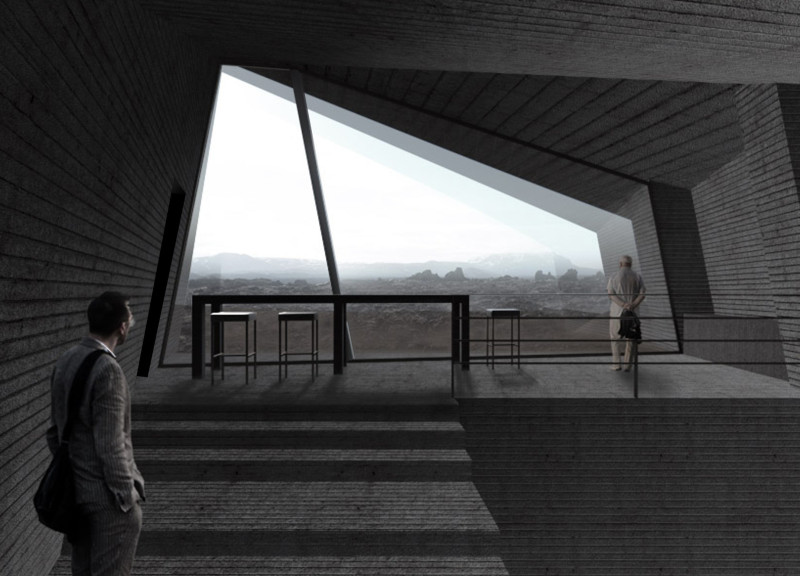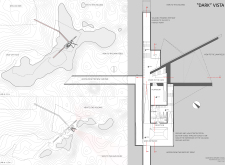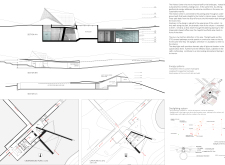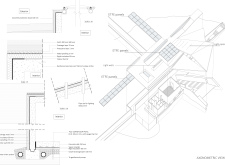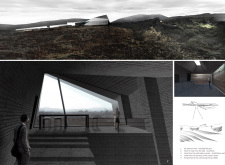5 key facts about this project
At the heart of the project is the concept of subterranean architecture, which not only respects the natural terrain but also plays a crucial role in sustainability. By placing most of the structure underground, the design reduces visual disruption and leverages geothermal energy for heating and other operational needs. This strategic placement allows for a more cohesive relationship with the environment, ensuring the building becomes a part of the landscape rather than an obstruction.
The center encompasses various functional spaces, including a reception area, an information center, educational exhibits, a café, and a gift shop. This diversity caters to a range of visitor needs, enhancing the overall experience. Thoughtful navigation routes and access points from parking and drop-off areas ensure efficient visitor flow, allowing for an intuitive exploration of the facilities.
One of the standout features of the "Dark Vista" design is its use of materials. The primary material, concrete, serves both structural and aesthetic purposes, providing durability while integrating with the earth. Incorporating ETFE panels into the design promotes natural light diffusion, enhancing the ambiance of the interior spaces while ensuring energy efficiency. Additionally, strategically placed glass facades offer panoramic views of the surrounding volcanic landscapes, fostering an inviting atmosphere where nature can be appreciated from within.
Light and spatial experience are crucial design elements throughout the project. The architecture incorporates daylighting strategies through carefully positioned light wells and large windows that bring the outside in. These design choices not only reduce reliance on artificial lighting but also create a comforting environment for visitors. The result is an inviting space that encourages contemplation and engagement with the surrounding natural beauty.
What sets the "Dark Vista" Visitor Center apart is its commitment to sustainability, educational outreach, and the seamless connection it fosters between architecture and nature. The design challenges conventional notions of visitor centers by prioritizing minimal environmental impact while enhancing the educational experience. This project serves as a practical example of how architecture can respond to and respect its environment, leveraging design and materiality to craft spaces that encourage learning and appreciation of geological phenomena.
For those interested in a deeper exploration of this architectural endeavor, reviewing the architectural plans, sections, and designs will provide valuable insights into the innovative concepts that shaped this project. Understanding the underlying architectural ideas will enhance appreciation for how the "Dark Vista" Visitor Center stands as a thoughtful embodiment of modern architectural practice in a sensitive ecological context.


